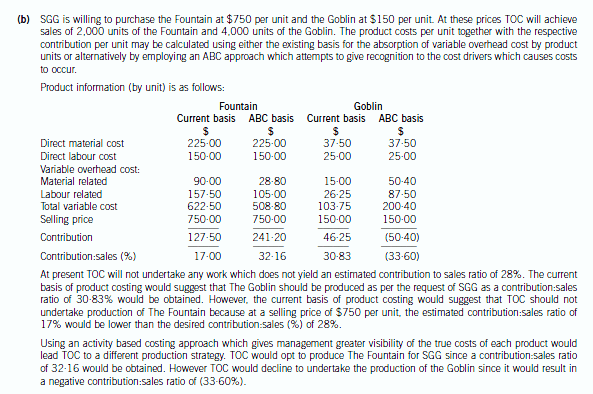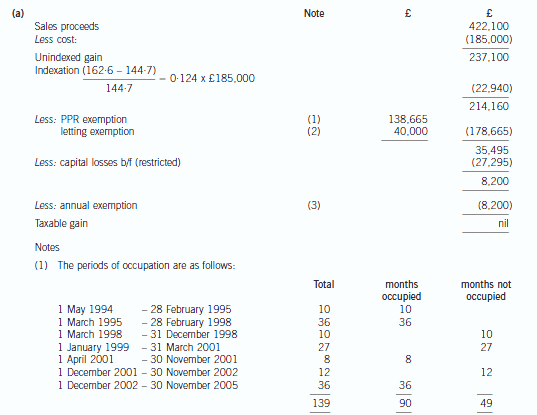2020年贵州省7月ACCA考试成绩查询时间
发布时间:2020-08-12
贵州省2020年7月ACCA考试成绩查询时间,大家想知道吗?下面51题库考试学习网就带领大家一起来了解看看贵州省ACCA考试成绩查询相关内容,感兴趣的小伙伴赶紧来围观吧。
根据官网消息,2020年7月ACCA考试成绩预计将于8月1日公布。
2020ACCA成绩查询方式与流程
ACCA成绩查询方式
1.电子邮件(e-mail)---您可在MYACCA内选择通过e-mail接收考试成绩。
2.短信通知---ACCA可采用短信通知考试成绩,但由于跨国服务较为复杂,可能不能接收短信。
3.网站查看考试成绩—在ACCA官网注册过的所有学生都能登录官网查看自己的成绩。
官网成绩查询的步骤:
1、登录
点击myACCA,输入学员账ID和密码,
2、点击exam entry,
查看自己的考试报名结果。
3、下载
确认好考试报名的信息后,一定要确认自己的身份信息,考试科目以及考试地点。点击“Download”j进行准考证的下载。
ACCA成绩查询结果显示:
到ACCA全球官方网站http://www.accaglobal.com/;点击Myacca登陆,点左面框架里的“EXAMS”进入页面,中间有一段:
EXAM STATUS REPORT Your status report
provides details of the ACCA exams you have already passed and those you have
still to complete
EXAM STATUS REPORT Your status report
provides details of the ACCA exams you have already passed and those you have
still to complete
View your status report————这个是超级链接,点进去就是你全部的考试分数记录了。
2020年ACCA成绩合格标准:
ACCA考试是百分制,50分为及格线。这意味着考生需要单科考试分数至少需要达到50分才算通过了考试。
成绩有效期:
ACCA 应用课程(F阶段)成绩有效期为无限期,战略课程(P阶段)成绩有效期为7年
ACCA考试期限跟CPA一样实行轮废制,即需要在一定的时间里面考完规定的科目,否则成绩将会无效。
时间计算:
根据以前的规则,学员必须在首次报名注册后10年内通过所有考试,否则将注销其学员资格。而后ACCA对时限做出了重要调整即:F段成绩永久有效,P段要在7年内考完。根据新规则,专业阶段考试的时限将为7年。因此,国际财会基础资格(Foundations in Accountancy,简称FIA)的考试以及ACCA资格考试的基础阶段F1-F9考试将不再有通过时限。
“7年政策”意味着从你通过P阶段的第一门科目开始,7年内需完成P阶段所要求的所有ACCA考试科目。否则,从第8年开始,你第1年所考过的P阶段科目成绩将会被视为过期作废,须重新考试。
另外,需要说明的是——此政策实行滚动式废除,也就是说不会在第8年时把你之前7年所有考过的P阶段科目成绩都废除,只会废除你第1年考过的P阶段科目成绩,第9年会废除你前2年所通过的P阶段科目成绩,以此类推。
以上是关于贵州省2020年7月ACCA考试成绩查询相关内容,小伙伴们都了解了吗?如果大家对于ACCA考试还有别的问题,可以多多关注51题库考试学习网,我们将继续为大家答疑解惑!
下面小编为大家准备了 ACCA考试 的相关考题,供大家学习参考。
(ii) Briefly discuss THREE disadvantages of using EVA? in the measurement of financial performance.
(3 marks)
(ii) Disadvantages of an EVA approach to the measurement of financial performance include:
(i) The calculation of EVA may be complicated due to the number of adjustments required.
(ii) It is difficult to use EVA for inter-firm and inter-divisional comparisons because it is not a ratio measure.
(iii) Economic depreciation is difficult to estimate and conflicts with generally accepted accounting principles.
Note: Other relevant discussion would be acceptable.
(ii) The sales director has suggested to Damian, that to encourage the salesmen to accept the new arrangement,
the company should increase the value of the accessories of their own choice that can be fitted to the low
emission cars.
State, giving reasons, whether or not Damian should implement the sales director’s suggestion.
(2 marks)
(ii) Damian should not agree to the sales director’s suggestion. The salesmen will each make a significant annual income
tax saving under the proposal, whereas the company will also be offset (at least partly) by the reduction in the dealer’s
bulk discount. Further, 100% first year allowance tax incentive for low emission cars is not guaranteed beyond 31 March
2008, and it is unlikely that any change in policy with regards to the provision of additional accessories will, once
implemented, be easily reversible.
(b) Using the unit cost information available and your calculations in (a), prepare a financial analysis of the
decision strategy which TOC may implement with regard to the manufacture of each product. (6 marks)

1 Stuart is a self-employed business consultant aged 58. He is married to Rebecca, aged 55. They have one child,
Sam, who is aged 24 and single.
In November 2005 Stuart sold a house in Plymouth for £422,100. Stuart had inherited the house on the death of
his mother on 1 May 1994 when it had a probate value of £185,000. The subsequent pattern of occupation was as
follows:
1 May 1994 to 28 February 1995 occupied by Stuart and Rebecca as main residence
1 March 1995 to 31 December 1998 unoccupied
1 January 1999 to 31 March 2001 let out (unfurnished)
1 April 2001 to 30 November 2001 occupied by Stuart and Rebecca
1 December 2001 to 30 November 2005 used occasionally as second home
Both Stuart and Rebecca had lived in London from March 1995 onwards. On 1 March 2001 Stuart and Rebecca
bought a house in London in their joint names. On 1 January 2002 they elected for their London house to be their
principal private residence with effect from that date, up until that point the Plymouth property had been their principal
private residence.
No other capital disposals were made by Stuart in the tax year 2005/06. He has £29,500 of capital losses brought
forward from previous years.
Stuart intends to invest the gross sale proceeds from the sale of the Plymouth house, and is considering two
investment options, both of which he believes will provide equal risk and returns. These are as follows:
(1) acquiring shares in Omikron plc; or
(2) acquiring further shares in Omega plc.
Notes:
1. Omikron plc is a listed UK trading company, with 50,250,000 shares in issue. Its shares currently trade at 42p
per share.
2. Stuart and Rebecca helped start up the company, which was then Omega Ltd. The company was formed on
1 June 1990, when they each bought 24,000 shares for £1 per share. The company became listed on 1 May
1997. On this date their holding was subdivided, with each of them receiving 100 shares in Omega plc for each
share held in Omega Ltd. The issued share capital of Omega plc is currently 10,000,000 shares. The share price
is quoted at 208p – 216p with marked bargains at 207p, 211p, and 215p.
Stuart and Rebecca’s assets (following the sale of the Plymouth house but before any investment of the proceeds) are
as follows:
Assets Stuart Rebecca
£ £
Family house in London 450,000 450,000
Cash from property sale 422,100 –
Cash deposits 165,000 165,000
Portfolio of quoted investments – 250,000
Shares in Omega plc see above see above
Life insurance policy note 1 note 1
Note:
1. The life insurance policy will pay out a sum of £200,000 on the death of the first spouse to die.
Stuart has recently been diagnosed with a serious illness. He is expected to live for another two or three years only.
He is concerned about the possible inheritance tax that will arise on his death. Both he and Rebecca have wills whose
terms transfer all assets to the surviving spouse. Rebecca is in good health.
Neither Stuart nor Rebecca has made any previous chargeable lifetime transfers for the purposes of inheritance tax.
Required:
(a) Calculate the taxable capital gain on the sale of the Plymouth house in November 2005 (9 marks)

Note that the last 36 months count as deemed occupation, as the house was Stuart’s principal private residence (PPR)
at some point during his period of ownership.
The first 36 months of the period from 1 March 1995 to 31 March 2001 qualifies as a deemed occupation period as
Stuart and Rebecca returned to occupy the property on 1 April 2001. The remainder of the period will be treated as a
period of absence, although letting relief is available for part of the period (see below).
The exempt element of the gain is the proportion during which the property was occupied, real or deemed. This is
£138,665 (90/139 x £214,160).
(2) The chargeable gain is restricted for the period that the property was let out. This is restricted to the lowest of the
following:
(i) the gain attributable to the letting period (27/139 x 214,160) = £41,599
(ii) £40,000
(iii) the total exempt PPR gain = £138,665
i.e. £40,000.
(3) The taper relief is effectively wasted, having restricted losses b/f to preserve the annual exemption.
声明:本文内容由互联网用户自发贡献自行上传,本网站不拥有所有权,未作人工编辑处理,也不承担相关法律责任。如果您发现有涉嫌版权的内容,欢迎发送邮件至:contact@51tk.com 进行举报,并提供相关证据,工作人员会在5个工作日内联系你,一经查实,本站将立刻删除涉嫌侵权内容。
- 2021-04-07
- 2019-03-20
- 2020-01-10
- 2019-01-05
- 2020-10-18
- 2020-08-12
- 2020-08-12
- 2019-01-05
- 2021-01-21
- 2020-01-10
- 2021-04-08
- 2020-09-05
- 2020-09-05
- 2021-01-07
- 2020-01-10
- 2020-01-10
- 2019-01-05
- 2020-01-10
- 2019-03-20
- 2020-10-18
- 2019-01-05
- 2021-04-07
- 2019-03-20
- 2020-09-05
- 2020-08-12
- 2021-04-04
- 2020-08-12
- 2020-10-18
- 2021-01-06
- 2020-09-05